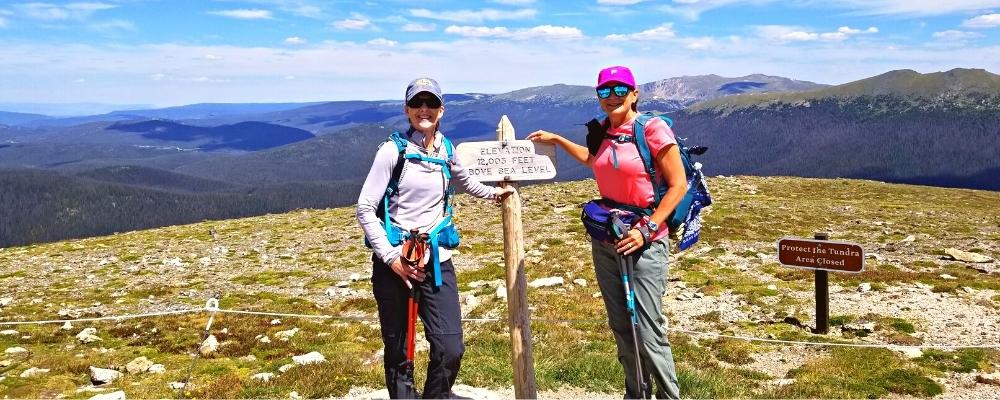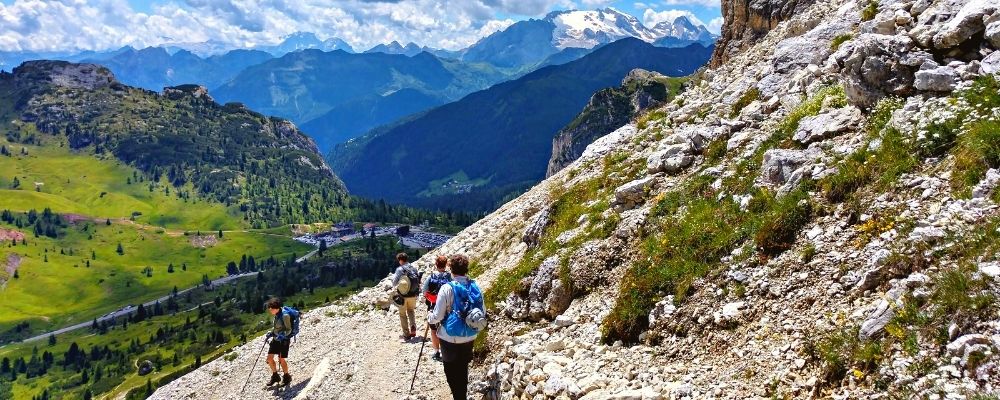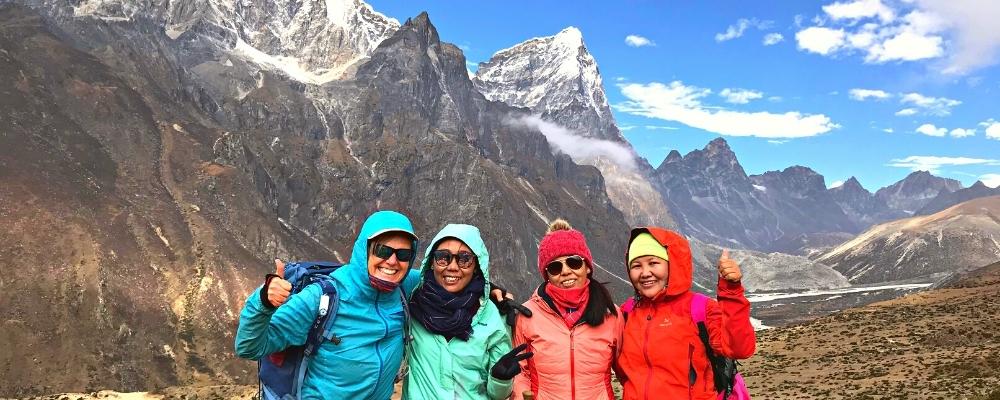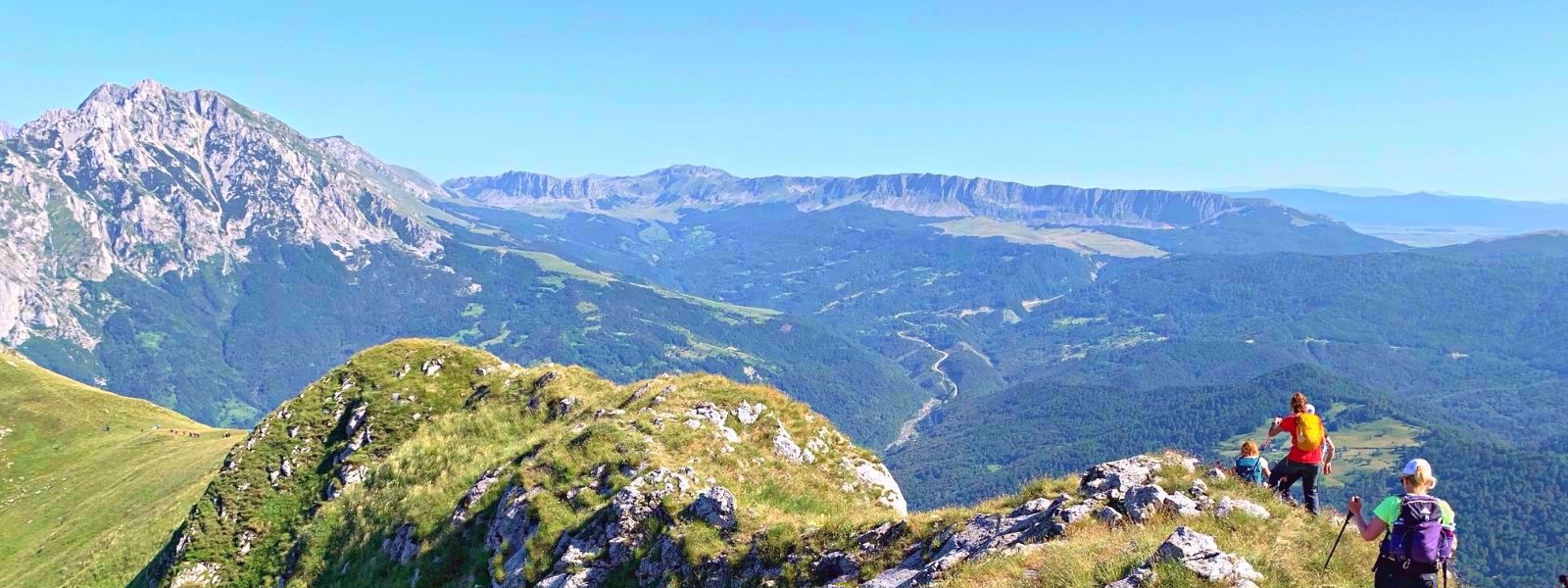How do you prepare your body and mind for a high-altitude adventure?
You are planning a trip to the mountains of Colorado or Wyoming, to Machu Picchu, Everest Base Camp, Kilimanjaro, or other high-altitude location, but you live close to sea level. How do you prepare your body and mind for your adventure?
First of all, being in the best physical condition for the level trip that you are taking is key to being able to enjoy and participate thoroughly and in your trip, regardless of altitude.
Second, the bad news is that great physical fitness doesn’t mean that you won’t succumb to altitude illness. For example, during a trip to Mt. Kilimanjaro (19,300 feet), one participant was an active marathon runner, but she wasn’t able to climb higher than 15,000 feet because of altitude-related nausea and headaches, while others in the group who were “less fit” summited without issue.

Altitude affects us because there is less air pressure the higher up one attempts to endeavor. A graphic example of this is a potato chip bag. At sea level, a typical bag of chips is rather flat and squishy, but at 12,000 feet that same chip bag is inflated like a rigid balloon (and occasionally even pops!) because there is about 40% less air pressure against the bag, so the contents expand accordingly. The reduced air pressure is important because the air molecules in the atmosphere are more dispersed and therefore, there is less oxygen available to us in every breath.
When you go higher in elevation your body tries to adjust, or acclimatize, to lower oxygen levels. Breathing faster and deeper, along with a higher heart rate are efforts by your body to oxygenate and circulate blood at high elevation. Peeing more frequently is a result of the change in pH in your kidneys from exhaling more CO2 when you are breathing faster. Your face, hands and feet may also swell mildly, which is another sign your body is acclimatizing.
People who live at elevations over 6,000 feet adjust to less available oxygen by producing more red blood cells, using their lungs more effectively, and producing an enzyme that makes oxygen exchange on the cellular level more efficient.
Spending time and training at increasing altitudes is the best way to prepare your body for high elevation hiking. Unfortunately, that may not be practical for you before a trip. The good news is that Adventures in Good Company’s trip itineraries at high elevations follow best practices to assist with acclimatization. For example, our Trekking to Everest Base Camp trip builds in extra acclimatization days and avoids sleeping higher than a 1,500 feet elevation gain each day.

There are some additional keys to hiking at high altitudes:
1. Slow down
Hiking at a high elevation is best accomplished with a slower pace than you are used to. Mountaineers take a slow, steady pace; slow enough to avoid stopping to rest on a steep uphill, as it takes more effort to start again after a stop. AGC teaches the “Rest Step,” where you actually pause with each step on your weighted leg, to give your leg muscles a momentary rest. This technique is essential at high elevations.
2. Stay hydrated
You need to drink an additional 1-1.5 liters of water because high elevation locations have dry climates, causing you to lose more water than usual through evaporation from your skin and lungs. In addition, a natural side-effect of being at altitude is peeing more frequently, so that is even more reason to drink up water. But don’t overdo it – drinking too much water can also be harmful.
3. Eat carbohydrates
Your digestive system is affected at elevation and it is commonly suggested to eat a diet high in carbs to give you energy while being easier to digest than high fat and protein.
4. Avoid alcohol . . .
. . . and sleeping pills in the benzodiazepine family, as they both suppress breathing and result in lower blood oxygen. Alcohol contributes to dehydration and affects your brain, which is already working to adjust to less air pressure and oxygen.
5. Use sunscreen . . .
. . . on all exposed skin, especially lips, ears, and even inside your nostrils if you are traveling on snow where the high-altitude solar radiation can reflect and burn in places you never thought of…
6. Consult your physician
Before you go to altitude and ask about the prescription medication Diamox (Acetazolamide). This is the most commonly prescribed drug to both treat and prevent altitude illnesses. According to the Institute for High Altitude Medicine in Colorado, “Acetazolamide (Diamox®) taken 24 hours prior to arrival to altitude and the first 2 days at altitude is 75% effective in preventing AMS. It speeds up the acclimatization process in the body, stimulates breathing, raises blood oxygen, and increases urination.” There are a number of over-the-counter medications used to prevent or treat altitude symptoms. Gingko Biloba, according to some studies was effective in preventing AMS when started 5 days prior to ascending to altitude, at a dose of 100 mg twice a day. Ibuprofen and aspirin are also helpful in treating minor headaches. Chlorophyll, Altigen, and other supplements are recommended anecdotally, but there is no solid research on their efficacy in preventing altitude illness.
7. Know and watch for the common symptoms of altitude illnesses.
Headache, nausea, vomiting, loss of appetite, dizziness, fatigue, and sleeping difficulties are symptoms of Acute Mountain Sickness (AMS). If you experience any of these symptoms do not go higher until they are resolved; consider reducing your elevation and monitor symptoms closely.
High Altitude Pulmonary Edema (HAPE) and High-Altitude Cerebral Edema (HACE) are two life-threatening illnesses that can develop if AMS is not addressed. Confusion, disorientation, lethargy, or irrational behavior are symptoms of HACE. Severe breathlessness, persistent cough, and frothy sputum are symptoms of HAPE. These symptoms are serious and may indicate an emergency; you should descend to a lower altitude and get medical attention immediately.
8. Remember, even if you have adjusted well to high altitudes in the past, your body may not adjust well on the next trip.
Hiking at altitude requires extra preparation and vigilance to ensure health and safety, but the rewards can be great – they don’t call them breath-taking views for nothing!




